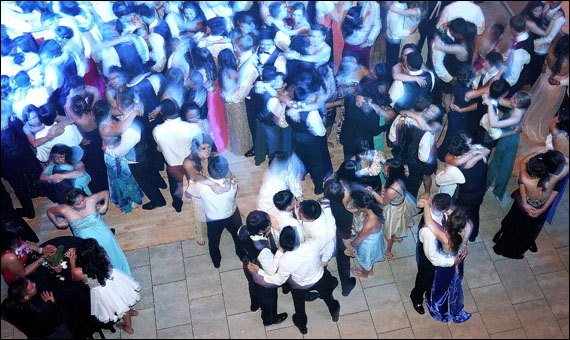
In England and Ireland, it is known as the “Debutante’s Ball”; In Germany, it is called the Abifeier; in Austria, it is called the Maturaball; in Sweden, it is called the Studentbalen. Here in the United States of America, we know it as the most anticipated and classic dance of high school: prom.
The word “prom” is short for “promenade,” a ceremonious opening of a formal ball. The prom can be traced all the way back to the 19th century, when formal, co-ed banquets were held for graduating classes of American universities. By the 1940s, growing teenage culture led to the kind of prom that more resembles modern day prom.
Traditionally, the prom represents a teenager’s transition from adolescence into adulthood. Thus, part of what makes prom so anticipated and exciting lies in its acceptance of only junior and senior students. Freshman Amy Chen sees it merely as a big dance for the upper classmen. “I see it as a senior class celebration because it’s their last year. They’re ending their school year on a fun note,” she comments.
Jessica Ding, a junior, discusses the excitement in the school atmosphere regarding prom. “Everyone talks about it, asking, ‘Oh, [are] you going to prom? You should go!’ It’s one of those high school experiences where your kids will probably ask you about it, and it’d be lame to say you didn’t go,” she says.
By the 1950s, the growing importance and fancier atmosphere of prom signified that the prom was not just an ordinary dance. Increased competition gave way to Prom King and Prom Queen nominations, and couples began to vie for being voted the “best dressed” or even the “most attractive.”
Junior Mary Grace de Castro explains that modern movies tend to focus mainly on the Prom King and Queen aspect of the dance. “I thought they would be voted on what they do in school, but it’s really based on popularity and doesn’t let other people shine,” she says of the media’s portrayal of the competition.
Not only does the media bring attention to the competition of proms, but it also emphasizes the idea of choosing and asking a date. Senior Paul Chen describes how he asked his date to prom this year. “During physics in Ratto’s room, I spelled out P-R-O-M-? in Christmas lights using five serious circuits and then gave her flowers and asked her when she walked into class,” he explains.
Another prom tradition that is still kept today is the presentation of the corsage and boutonniere. Back then it was customary for a man to pull a single flower out of the presented bouquet and delicately attach it to the dress of his date when the couple attended a formal event.
Janell Leung, a sophomore, says about corsages, “It’s nice, but it’s not really necessary because he pays for the tickets. But…I guess you can tell he cares, then.”
“It shows consideration,” says junior Sam Bunarjo. “It shows that the guy thought about the girl when getting ready for prom.”
Ultimately, both the media’s portrayal of prom and the dance’s traditions themselves set up the last dance of the year as a magical, perfect event in a teenager’s life.
However, there are certainly those who disagree with the idea of prom needing to be precisely traditional. Junior Jyoshita Singh says, “I think prom is not all about the ‘perfect’; it should be about having fun and letting loose and enjoying the music. To me, prom is just a place to hang out and dance with friends.”
When she went to high school, Rei Jackler, a US History student teacher, attended her school’s “Un-prom” instead of prom. “We were not allowed to spend more than five dollars on an outfit. The theme was the ‘Foot Ball,’ where you had to make something crazy on your feet. I went with a tutu and roller skates,” she says. “I’m not sure why exactly my school did it, but they probably didn’t want people to be left out, like if they can’t afford dresses or they can’t win Prom King or Queen,” she adds.
Senior Megan Kain believes that prom has the genuine ability to make anyone, boy or girl, feel special. “Being at prom makes you feel like you’re at a celebrity event,” Kain says. “You get to dress up, and because it’s a more formal event, you can really see people at their best.”



